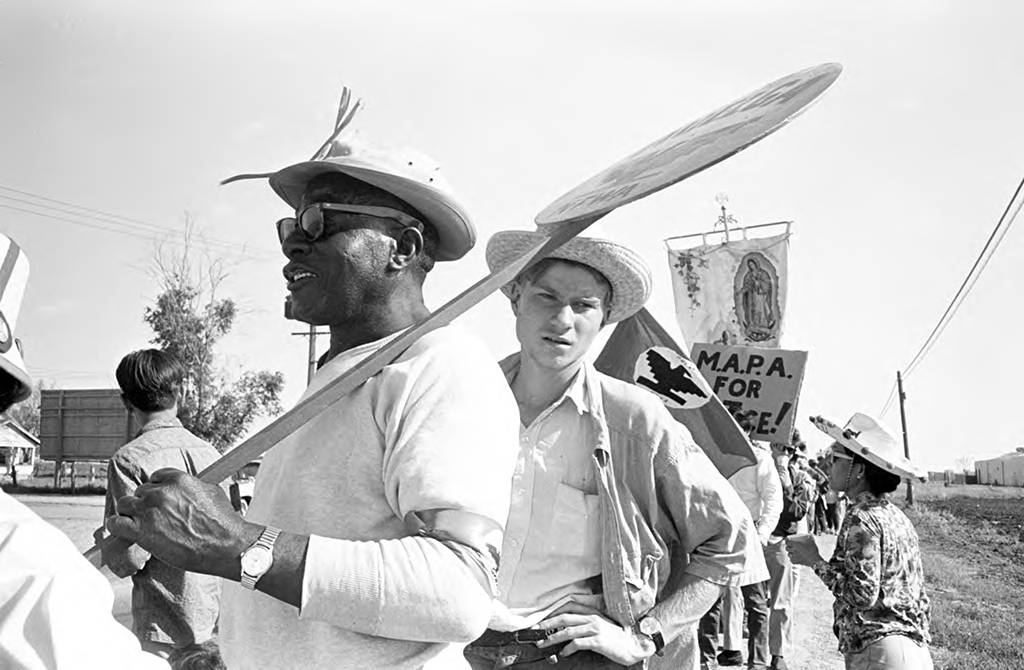William King
William King
William King carries a Huelga-NFWA sign during the march to Sacramento, 1966. Photo by John Kouns
William H. King, from Fontana, CA, was born in either 1902 or 1903 and had been a farmworker since 1934—a period of strong union activism in the fields. Little is known about King’s life and activism. He was a member of the Agricultural Workers Organizing Committee (AWOC) under the AFL-CIO. It was AWOC’s Larry Itliong and Philip Vera Cruz who started the grape strike in 1965. King supported the strike that started in September 1965.
William King at an AWOC and NFWA picketgrape strike in Delano, California, ca. 1965-1966. Photo by John Kouns.
Throughout the following fall and winter, he picketed at various fields. He became one of 17 members of AWOC who challenged the prohibition by AFL-CIO’s Al Green of joining the pilgrimage to Sacramento in 1966. Green argued that the strike was “a trade union dispute, not a civil rights movement or a religious crusade.”
William King carries a Huelga-NFWA sign during the march to Sacramento, 1966.
Unlike the March on Washington of the Civil Rights era that had a group converged on one place, the pilgrimage to Sacramento chose Mao’s model of a traveling march that organized people along the route. Thus, the march was planned to pass through as many small towns as possible. The march was led by a farmworker carrying a banner of Our Lady of Guadalupe, patron saint of Mexico, made by 22-year-old Alicia Jiménez from Sacramento. American and Mexican flags were also carried at the head of the procession. As the marchers walked single file along Highway 99 and on small roads, people used to come to cheer the workers on and offer food or drinks. Sometimes, music performers welcomed the marchers and a few of these local musicians joined the march to Sacramento.
King became one of the originales who trekked the entire distance from Delano to Sacramento from March 17 to April 10. His image was featured in El Malcriado as the oldest participant of the pilgrimage at 63 years of age. Roberto Bustos, known as El Capitán for his role during the march, remembers King’s resilience.
William King and marchers walking on the road during the march to Sacramento, 1966. Photo by John Kouns.
“On the march to Sacramento, when we were lining up to start and when I found out his age was 63 years, I wanted him to come to the front with me that way I can keep an eye on him in case something happened,” said Bustos. “He said, ‘no, no.’ He told me, ‘I want to bring up the rear,’ and bring up the rear he did. I could hear him yelling, ‘Move it up, move it up, you’re marching too slow!’ Wow! He made it all the way to Sacramento—25 days, 400 miles—with no problem! A true huelguista!” After the union contracts were successfully signed in 1970, King relocated to Los Angeles.
Tom & Ethel Bradley Center
California State University, Northridge
18111 Nordhoff Street, Northridge, CA 91330
Phone: (818) 677-1200 / Contact Us


